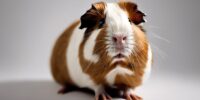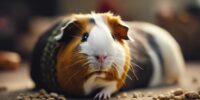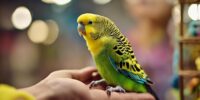Why Understanding Your Guinea Pig's Breed Can Improve Care
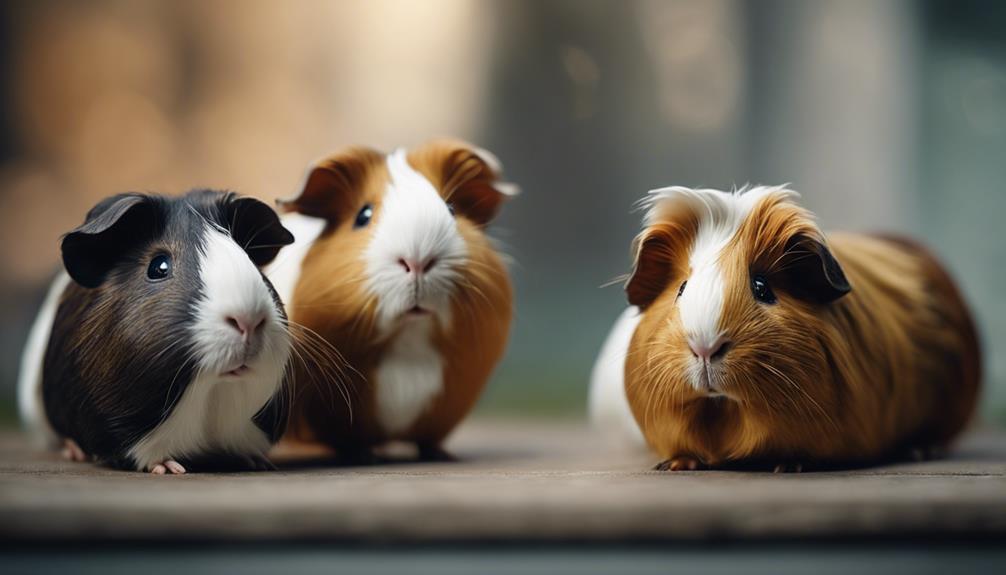
Guinea pigs come in a variety of breeds, each with its own unique characteristics and care requirements. By understanding your guinea pig's breed, you can provide better care and ensure its health and happiness. Some popular breeds include the American, Abyssinian, Peruvian, and Skinny pig. Each breed has specific grooming needs, dietary preferences, and potential health issues to be aware of. Take the time to research your guinea pig's breed to tailor your care routine to its specific needs.
Having a good understanding of your guinea pig's breed can also help you anticipate any potential behavior traits or health concerns that may be more common in certain breeds. For example, Abyssinian guinea pigs are known for their energetic and curious nature, while Peruvian guinea pigs require regular grooming to maintain their long hair. By knowing your guinea pig's breed characteristics, you can better prepare for their care and create a strong bond with your pet.
Benefits of Understanding Guinea Pig Breeds
Understanding your guinea pig's breed provides essential insights into tailoring their care to meet specific dietary, health, grooming, environmental, and social needs. When it comes to health, different guinea pig breeds may have particular susceptibilities or conditions that owners should be aware of. For instance, some breeds are more prone to dental issues or skin sensitivities. By knowing your guinea pig's breed, you can preemptively address these health concerns and provide appropriate care.
Grooming requirements also vary among guinea pig breeds. Long-haired breeds like Peruvians necessitate more frequent and detailed grooming sessions compared to short-haired breeds such as American guinea pigs. Understanding your guinea pig's breed helps in establishing a suitable grooming routine to keep their coat healthy and prevent matting or skin problems.
Moreover, each guinea pig breed has distinct preferences when it comes to their environment. Some breeds may enjoy more space to roam, while others prefer cozy hideaways. Being familiar with your guinea pig's breed characteristics enables you to create an environment that caters to their behavioral inclinations, promoting their overall well-being.
Impact on Care Routine
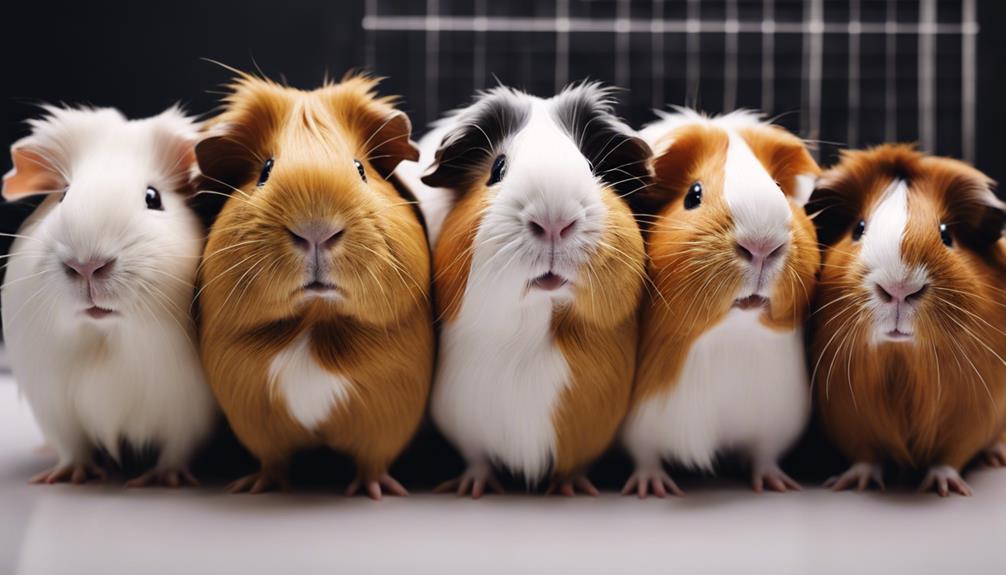
Tailoring your guinea pig's care routine according to their breed can significantly impact their overall health and well-being. For long-haired guinea pigs, grooming care is especially crucial. These breeds require more frequent grooming to prevent matting, which can lead to skin issues and discomfort. By understanding your guinea pig's breed, you can establish a grooming routine that meets their specific needs, ensuring their coat remains healthy and free of tangles.
Additionally, being aware of your guinea pig's breed can help you anticipate potential health issues. Certain breeds may be predisposed to certain conditions, such as dental problems or respiratory issues. With this knowledge, you can take proactive steps to prevent or manage these health concerns, ultimately improving your guinea pig's quality of life.
Incorporating breed-specific care practices into your guinea pig's routine can address their unique requirements, promoting good health and happiness for your furry companion.
Breed-Specific Health Considerations

Different guinea pig breeds exhibit distinct health considerations that necessitate tailored care practices to ensure their well-being.
For instance, Abyssinian guinea pigs are prone to dental issues due to their unique tooth structure, requiring regular dental check-ups.
Peruvians, on the other hand, may need extra grooming to prevent matting of their long hair, which can lead to skin problems if neglected.
Certain breeds, like the American guinea pig, have a higher susceptibility to obesity, highlighting the importance of monitoring their diet and providing ample opportunities for exercise to maintain a healthy weight.
Understanding these breed-specific health tendencies can aid in early detection and prevention of potential problems, such as recognizing skin irritations in Skinny pigs due to their lack of fur protection.
Tailoring Nutrition and Diet
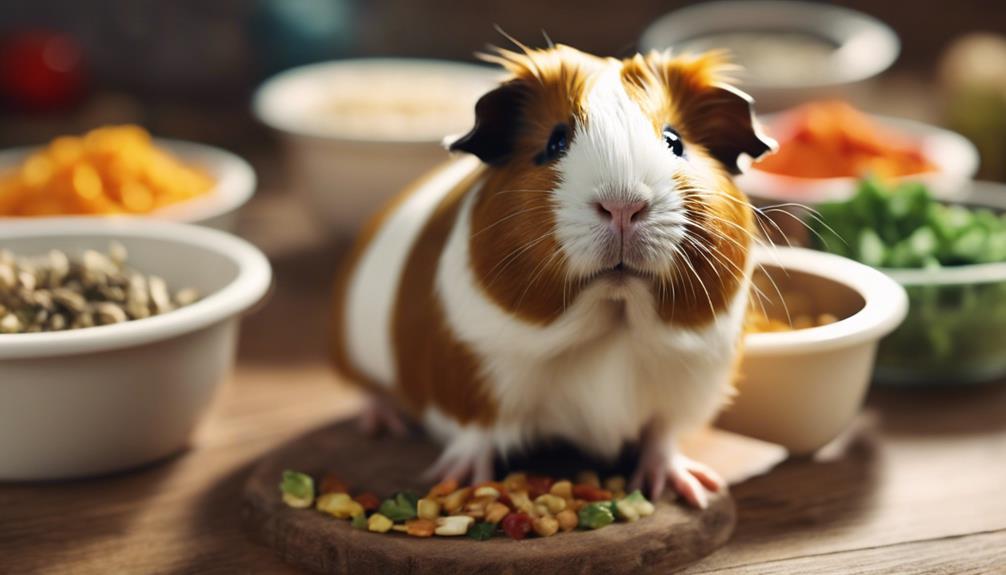
Certain guinea pig breeds may require specific dietary adjustments to ensure optimal health and well-being. Understanding the nutritional needs of your guinea pig's breed is crucial for providing adequate care. Tailoring their diet can help prevent deficiencies and support their overall health. Here is a table outlining some general dietary considerations for different guinea pig breeds:
| Breed | Dietary Considerations |
|---|---|
| Abyssinian | Higher need for vitamin C due to genetic predisposition |
| Peruvian | Require more protein-rich foods for coat health |
| Skinny | Need higher fat content to maintain body temperature |
| Texel | Susceptible to dental issues, may need softer food options |
| Himalayan | Prone to obesity, require controlled portions of pellets |
Behavioral Insights and Breed Differences
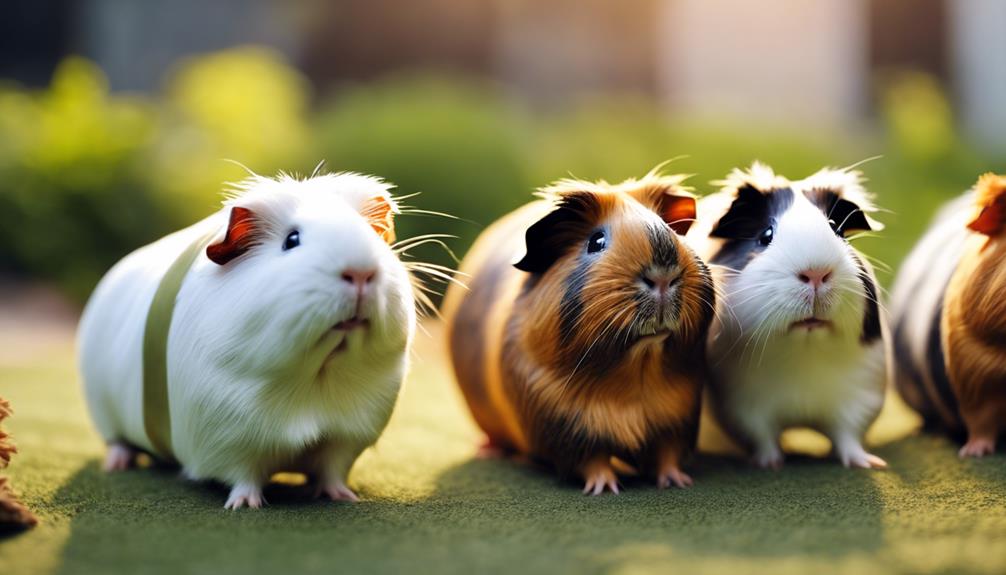
Understanding the behavioral nuances and unique characteristics of various guinea pig breeds is essential for tailoring enrichment activities to cater to their natural tendencies. Guinea pigs are social animals that exhibit breed-specific behaviors, influencing how they interact with their environment and caretakers.
Here are some insights into breed differences:
- Abyssinians are known for being more active and curious, requiring plenty of mental stimulation and space to explore.
- American guinea pigs have laid-back and charming personalities, enjoying relaxed interactions and gentle handling.
- Peruvians are often more high-strung and may require extra attention to ensure they feel safe and secure.
- Skinny pigs, being hairless, are sensitive to temperature changes and need warm environments to thrive.
- Texels have long, curly fur that demands regular grooming and may impact their comfort levels during handling sessions.
Housing and Environment Adjustments
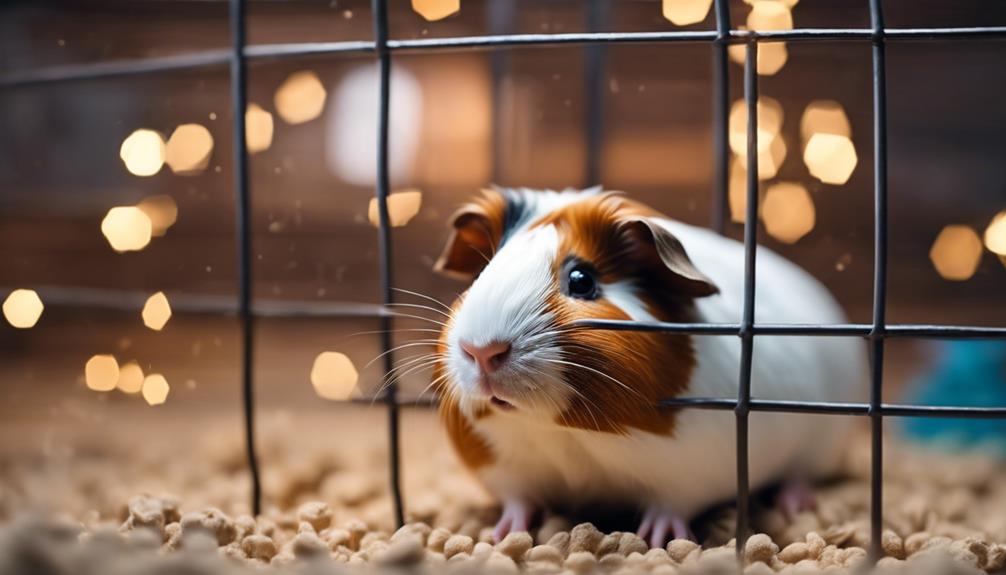
To ensure your guinea pig's well-being and comfort, adapting their housing and environment to suit their breed-specific requirements is crucial. Understanding your guinea pig's breed can help you determine the optimal cage size, ensuring they've enough space to move around and exercise comfortably.
Different breeds may have varying temperature preferences, affecting the type of bedding needed to keep them cozy. Providing suitable bedding materials can help prevent discomfort or health issues related to temperature regulation.
Additionally, considering breed-specific behaviors is essential when choosing enrichment items and toys. Tailoring these items to match your guinea pig's natural instincts can keep them mentally stimulated and happy.
Enhancing Bonding and Interaction
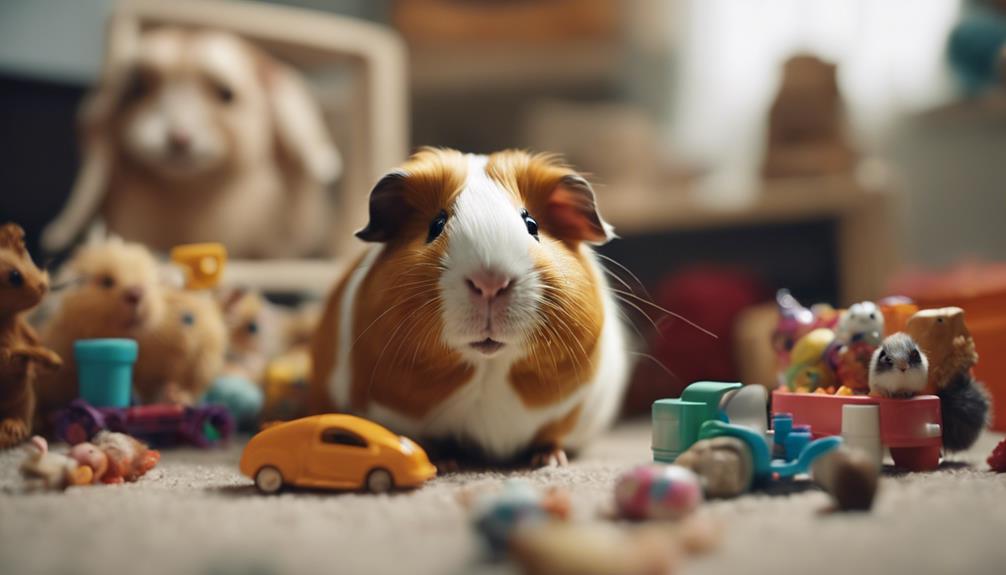
For optimal bonding and interaction with your guinea pig, tailoring your approach to their specific breed characteristics is essential. Different guinea pig breeds exhibit unique behaviors that can influence how they interact with their owners. Understanding these breed-specific behaviors can help you enhance your bond with your furry companion.
Here are some tips to improve bonding and interaction based on your guinea pig's breed:
- Observe and adapt: Watch your guinea pig closely to understand their preferences and adjust your interactions accordingly.
- Provide suitable enrichment activities: Offer toys and activities that align with your guinea pig's breed tendencies to keep them mentally stimulated and happy.
- Respect social needs: Some breeds may require more social interaction, while others prefer solitude. Respect your guinea pig's social preferences for a harmonious relationship.
- Communicate effectively: Learn how your guinea pig communicates through their breed-specific behaviors to strengthen your bond and avoid misunderstandings.
- Health and grooming considerations: Be aware of any breed-specific health concerns or grooming requirements to ensure your guinea pig is comfortable and healthy, fostering a deeper connection between you both.
Frequently Asked Questions
What You Need to Know About Breeding Guinea Pigs?
Understanding breeding guinea pigs involves genetic health, selective breeding, and responsible ownership. Proper care during gestation, recognizing signs of distress, and providing a suitable environment are crucial. It's essential to prioritize the well-being of both parents and offspring.
What Characteristics Make Guinea Pigs Desirable Pets?
Guinea pigs are desirable pets for their gentle demeanor, social nature, and interactive behaviors. They require a diet rich in hay and veggies, need space for exercise, and thrive in pairs or groups for companionship.
What Are the Problems With Breeding Guinea Pigs?
Breeding guinea pigs can pose health risks due to overbreeding, leading to genetic disorders and weakened immunity. It contributes to overpopulation in shelters and reduces genetic diversity. Understanding these issues is crucial for responsible breeding practices.
What Do Guinea Pigs Do When Trying to Mate?
Guinea pigs exhibit mating rituals involving mounting, chasing, and vocalizations. Males may mount females, who show receptivity by raising hindquarters and purring. Both genders engage in chasing and circling. Understanding these behavioral cues helps manage reproductive instincts and prevent unwanted pregnancies.


